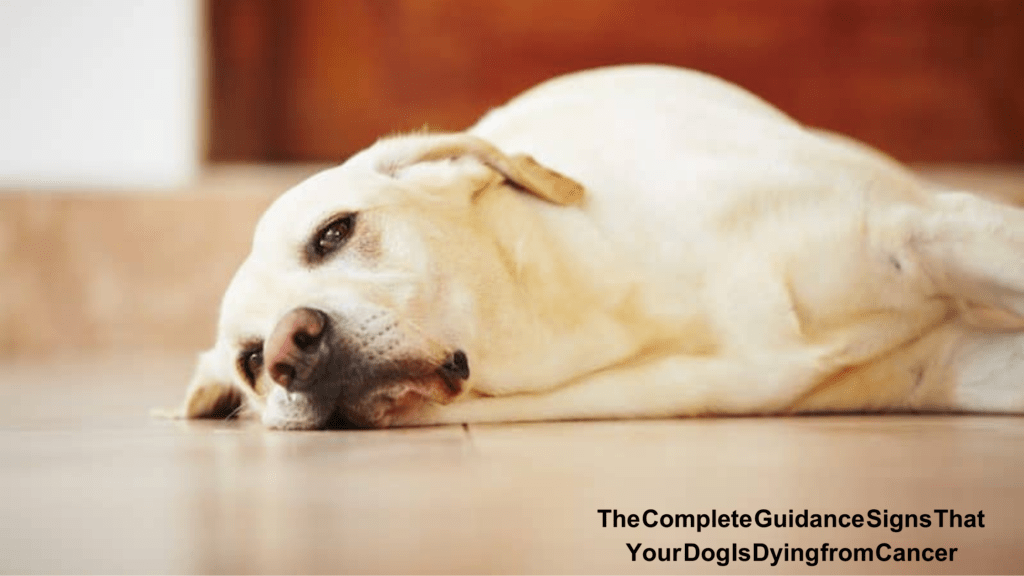Loss of Appetite:
Loss of appetite is a common symptom in dogs signs a dog is in pain cancer, as well as many other health conditions. However, it’s important to note that loss of appetite alone does not necessarily mean that a dog is dying of cancer. It can be a sign of various other medical issues or simply a temporary issue related to factors such as stress, dietary changes, or minor illnesses.
In the meantime, here are a few tips that might help stimulate your dog’s appetite:
- Offer highly palatable and aromatic foods:
Try offering different types of food with strong smells that may entice your dog to eat. You can also warm the food slightly to enhance its aroma.
- Hand-feed or syringe-feed:
If your dog is not eating on their own, you can try hand-feeding small amounts of food or using a syringe to gently feed them.
- Try different food options:
Experiment with different types of food, including wet or canned food, home-cooked meals, or commercially available prescription diets specifically formulated for dogs with appetite issues.
- Maintain a calm environment:
Create a calm and stress-free environment during mealtime to help your dog feel more relaxed and comfortable.
Lethargy And Weakness:
Lethargy and weakness are common symptoms that can occur in dogs with cancer, as well as many other health conditions. These symptoms can be a result of the cancer itself, the body’s response to the disease, or the side effects of certain treatments. However, it’s important to note that lethargy and weakness alone do not necessarily indicate that a dog is dying of cancer.
If your dog is experiencing lethargy and weakness, it is crucial to consult with a veterinarian. They can evaluate your dog’s overall health, conduct diagnostic tests if necessary, and determine the underlying cause. The veterinarian may recommend specific treatments or interventions to address the symptoms and improve your dog’s quality of life.
Here are some general tips to help support a lethargic or weak dog:
- Rest and comfort:
Ensure that your dog has a quiet and comfortable place to rest. Provide a soft and supportive bed or blanket to help alleviate discomfort.
- Monitor activity levels:
While some exercise is important, be mindful not to overexert your dog. Allow them to rest as needed and avoid activities that may cause excessive strain.
- Nutrition and hydration:
Offer a balanced and nutritious diet to support your dog’s overall health. Consider consulting with a veterinarian to determine the best diet for your dog’s specific needs. Ensure that your dog has access to fresh water at all times to prevent dehydration.
- Medications and supplements:
If prescribed by your veterinarian, administer any medications or supplements as instructed. These may help manage symptoms, provide pain relief, or address specific underlying conditions.
Environmental adjustments:
Make necessary adjustments to your home environment to accommodate your dog’s mobility issues. This may include providing ramps or stairs for easier access to elevated surfaces or restricting access to areas that may pose risks or require excessive physical effort.
Difficulty Breathing:
Difficulty breathing, also known as dyspnea, can be a concerning symptom in dogs, including those with cancer. It’s important to note that difficulty breathing can have various causes, and it does not automatically indicate that a dog is dying of cancer. However, if your dog is experiencing difficulty breathing, it’s crucial to seek veterinary attention promptly.
Here are a few potential causes of difficulty breathing in dogs with cancer:
- Tumor growth:
Depending on the type and location of the cancer, tumors can grow and impede the normal functioning of the respiratory system, leading to breathing difficulties.
- Metastasis:
If the cancer has spread to the lungs or other organs involved in breathing, it can affect the dog’s respiratory function.
- Effusion:
Some cancers can cause the accumulation of fluid around the lungs or in the chest cavity, leading to compression of the lungs and resulting in breathing problems.
- Inflammation or infection:
Cancer can weaken the immune system, making dogs more susceptible to respiratory infections or inflammation, which can lead to breathing difficulties.
Pain:
Pain can be associated with cancer in dogs, as well as other health conditions. It’s crucial to seek veterinary care to properly assess and manage your dog’s pain. Only a veterinarian can provide a diagnosis and recommend appropriate treatment options for your dog’s specific situation.
Here are a few general suggestions to help manage pain in dogs:
- Medications:
Your veterinarian may prescribe pain medications to help manage your dog’s pain. It’s important to follow their instructions carefully and administer the medications as directed.
- Comfort and rest:
Create a comfortable and quiet environment for your dog to rest and recover. Provide a soft bed or blankets and ensure that they have a quiet place to relax without disturbances.
- Gentle exercise:
Depending on your dog’s condition, your veterinarian may recommend gentle exercise to help maintain mobility and prevent muscle stiffness. However, it’s essential to follow their guidance and avoid any activities that may exacerbate your dog’s pain.
- Temperature management:
Ensure that your dog is kept in a comfortable temperature-controlled environment. Extreme temperatures can potentially worsen pain or discomfort.
- Supportive care:
Provide supportive care for your dog, such as gentle massage or physical therapy, as recommended by your veterinarian. These modalities can help improve circulation, reduce muscle tension, and promote comfort.
Changes in Behavior:
When a dog has cancer, changes in behavior can occur as the disease progresses. However, it’s important to note that changes in behavior alone do not necessarily mean that a dog is dying of cancer. Behavior changes can be caused by various factors, including pain, discomfort, medication side effects, or other medical conditions. Consulting with a veterinarian is crucial to determine the underlying cause and appropriate course of action.
Here are some behavior changes that can potentially be associated with cancer:
- Restlessness:
Dogs with cancer may exhibit restlessness, pacing, or difficulty settling down. This can be due to discomfort, pain, or anxiety related to the disease.
- Withdrawal or social changes:
Dogs may become more withdrawn or less interested in social interactions. They may spend more time alone or show less enthusiasm for activities or interactions they previously enjoyed.
- Increased aggression or irritability:
Dogs in pain or discomfort may exhibit increased aggression, irritability, or sensitivity to touch. It’s important to approach them with caution and provide a calm and safe environment.
- Changes in sleep patterns:
Dogs may experience disruptions in their sleep patterns. They may have difficulty falling asleep, wake up frequently during the night, or exhibit excessive daytime sleepiness.
- Changes in appetite and water intake:
Cancer can affect a dog’s appetite and thirst. They may eat less or lose interest in food and water, leading to weight loss and dehydration.
- Grooming changes:
Dogs may exhibit changes in their grooming habits. They may groom themselves excessively or neglect their grooming altogether.
Conclusions:
Cancer is a significant health concern in dogs, and it can manifest in various forms and affect different organs and body systems. Recognizing the signs of cancer in dogs is crucial for early detection and prompt veterinary care. Common signs may include lumps or masses, unexplained weight loss, changes in appetite, lethargy, lameness, abnormal bleeding, difficulty breathing, and changes in behavior or personality.
If you notice any concerning signs a dog is in pain cancer, it’s important to consult with a veterinarian. They can conduct a thorough examination, perform diagnostic tests, and provide a proper diagnosis. Treatment options for cancer in dogs may include surgery, chemotherapy, radiation therapy, immunotherapy, targeted therapies, and palliative care, depending on the type and stage of cancer.
FAQ’s
Can Dogs Get Cancer?
Yes, dogs can develop various types of cancer, just like humans. Cancer is a leading cause of death in dogs, and it can affect different organs, tissues, and body systems.
What Are The Causes of Cancer in Dogs?
The exact causes of cancer in dogs are often unknown, but factors such as genetic predisposition, environmental factors, exposure to certain carcinogens, and immune system dysfunction may contribute to the development of cancer.
What Are The Signs a Dog is in Pain Cancer?
The signs a dog is in pain cancer can vary depending on the type and location of the cancer. Common signs may include lumps or masses, unexplained weight loss, changes in appetite, lethargy, lameness, abnormal bleeding, difficulty breathing, and changes in behavior or personality.
How is Cancer Treated in Dogs?
Treatment options for cancer in dogs may include surgery to remove tumors, chemotherapy, radiation therapy, immunotherapy, targeted therapies, and palliative care to manage symptoms and improve quality of life. The recommended treatment approach depends on the type and stage of cancer and the overall health of the dog.
Can Cancer in Dogs Be Cured?
The prognosis and potential for a cure vary depending on the type and stage of cancer. Some types of cancer in dogs can be cured or managed effectively, while others may have a more guarded prognosis. The best course of action is to consult with a veterinarian who can provide more specific information based on the individual dog’s case.



